NewNews_ChuckRieger_Amazon
Posted on November 11, 2020
Chuck & Linda Rieger’s Earthwatch Expedition to the Peruvian Amazon in September 2019
Early in 2019, Linda had found an Earthwatch travel adventure to the Peruvian Amazon, to do some critter counting for about 10 days under the supervision of a principal investigator and his research staff of several younger scientists. This is a long-standing Earthwatch program (perhaps 25 years by now), designed to collect data about global climate and habitat changes that are occurring in the Amazon basin, and then to report the data annually to the Peruvian government, along with scientific assessments, summaries, and conclusions.
So we set off at the end of August on a flight to Lima, Peru and got started with two days of sightseeing in the city and its environs. The big surprise there was that, even though Lima is relatively close to the equator at 12 degrees south latitude, it was downright chilly and damp – low 60’s and cloudy. So we put on several layers of our “Amazon” clothing, which we had packed in anticipation of 95+ degree sunshine, and did some sightseeing. After that, we hopped on a plane to the smaller city of Iquitos (population around 500,000) about 600 miles to the northeast, where our river and rain forest adventures began.
 |
Braving the elements in Lima the first two days. |
 |
Here’s what the Amazon looked like as we were approaching Iquitos on the flight from Lima. |
 |
Casa Morey, our hotel for the first night in Iquitos. It has had a long history dating back to 1913, during the days of the Peruvian rubber barons. Here’s a link to check out: CasaMorey |
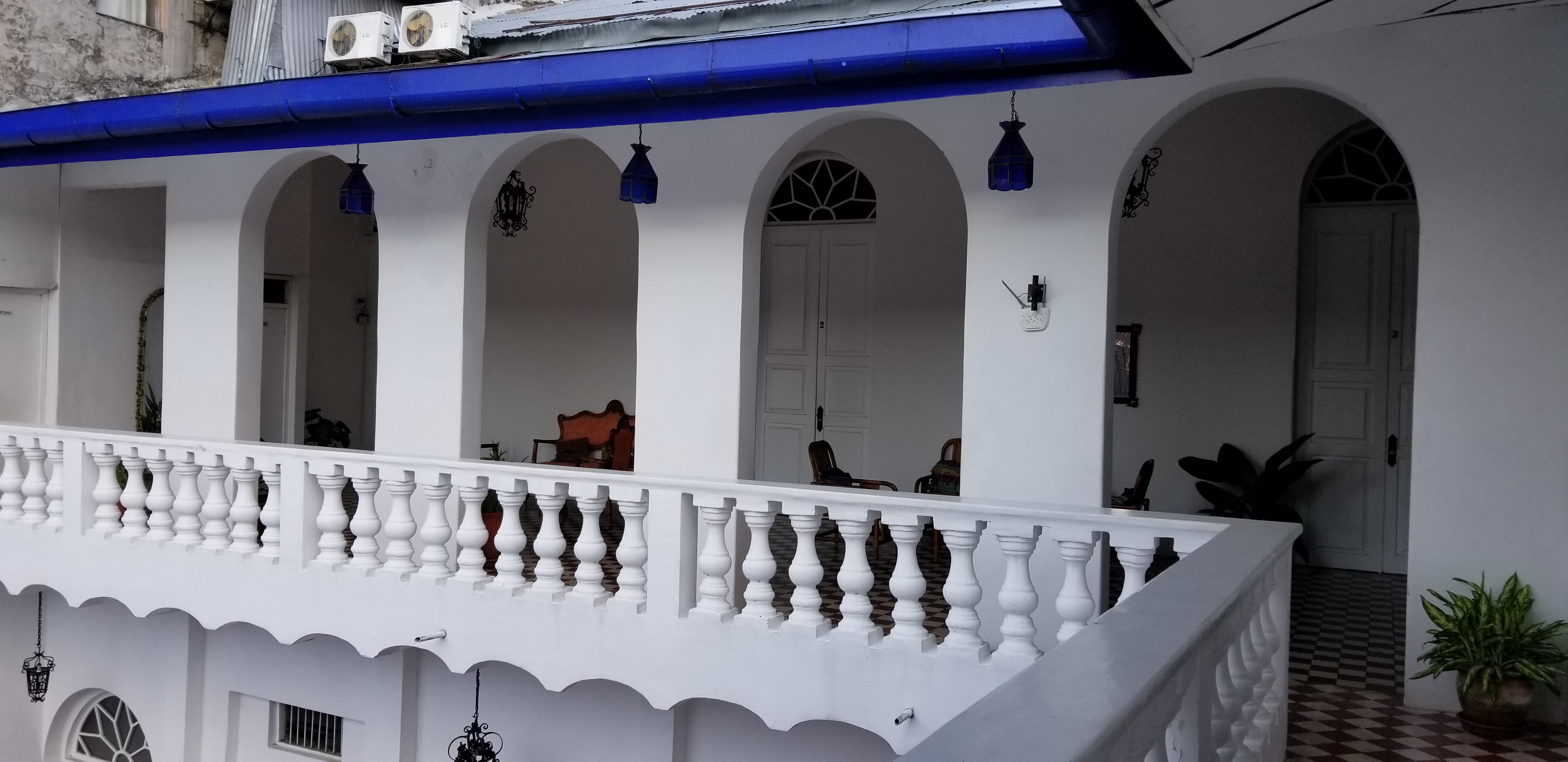 |
A view of Casa Morey’s second floor from the interior courtyard. |
 |
And a view of the river from a public plaza next to Casa Morey. We were there during the dry season, and saw many house boats high and dry, awaiting the next rainy season’s flooding to get back out on the river. |
 |
There were tens of thousands of these “Motorcars” everywhere (sawed-off motorcycles typically attached to a 2-seat carriage), ready to take us wherever we wanted for just a few soles (each worth about 27 cents U.S.). Motorcar drivers are generally known as daredevils, zipping in and out of traffic with clearances measured in inches. Here are a couple of videos: Motorcars1, Motorcars2 |
 |
Inside the Iquitos marketplace, where everything was fresh and looked to be a real bargain. (We were cautioned to keep a close watch on our wallets and purses in and around the market!) |
 |
We had dinner and an introductory talk by the principal investigator, Richard Bodmer, at Casa Morey the first evening, then took a 60-mile bus ride the next morning to a small town where we boarded the boat that would take us to our main destination on a side branch of the main river. |
 |
We landed, disembarked, then walked across a quarter mile wide isthmus to the side branch of the river, where we caught this much smaller boat for the final travel segment of several miles. |
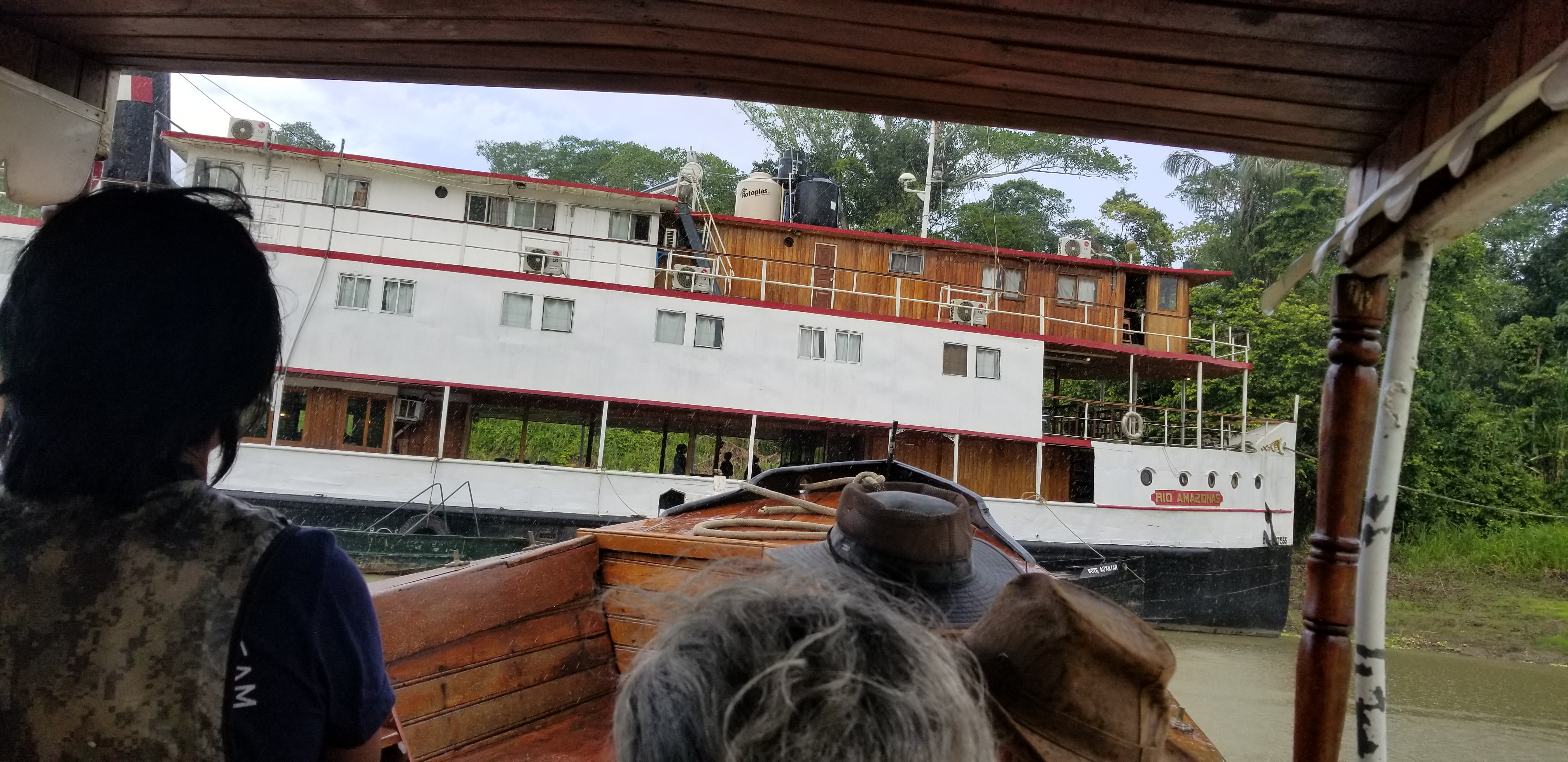 |
And here’s our floating hotel named Rio Amazonas – actually a repurposed rubber plantation boat, originally built around 1910, and more or less permanently anchored at this site. Here’s a video of it as we were coming home after an afternoon of critter counting several days later: RioAmazonas1 |
 |
It had air conditioning, running water, a central electrical generator, a kitchen and good sized dining room, a library, and even an outdoor jogging track on the topmost deck. Plus 20 or so nicely appointed and quite spacious cabins, each with a bathroom and small shower. |
 |
A view out the side of Rio Amazonas, looking at two other (what we assumed to be) support boats. Here’s a video showing all the surroundings as seen from the Rio Amazonas’ top deck: RioAmazonas2 |
 |
The first evening, after a tasty dinner, Richard (the P.I.) gave an overview of how the upcoming week would unfold, including some facts about the river and rain forest, the types of critters we would be counting, and general procedures on the boat. |
 |
Each evening after dinner and Richard’s talk, each of us tourists could sign up for three critter counting excursions the next day – one typically at 7 am, then back for lunch, the second typically around 2 pm, then back for dinner, and the final outing after that, in the dark. We chose the fish counting excursion as our first adventure. |
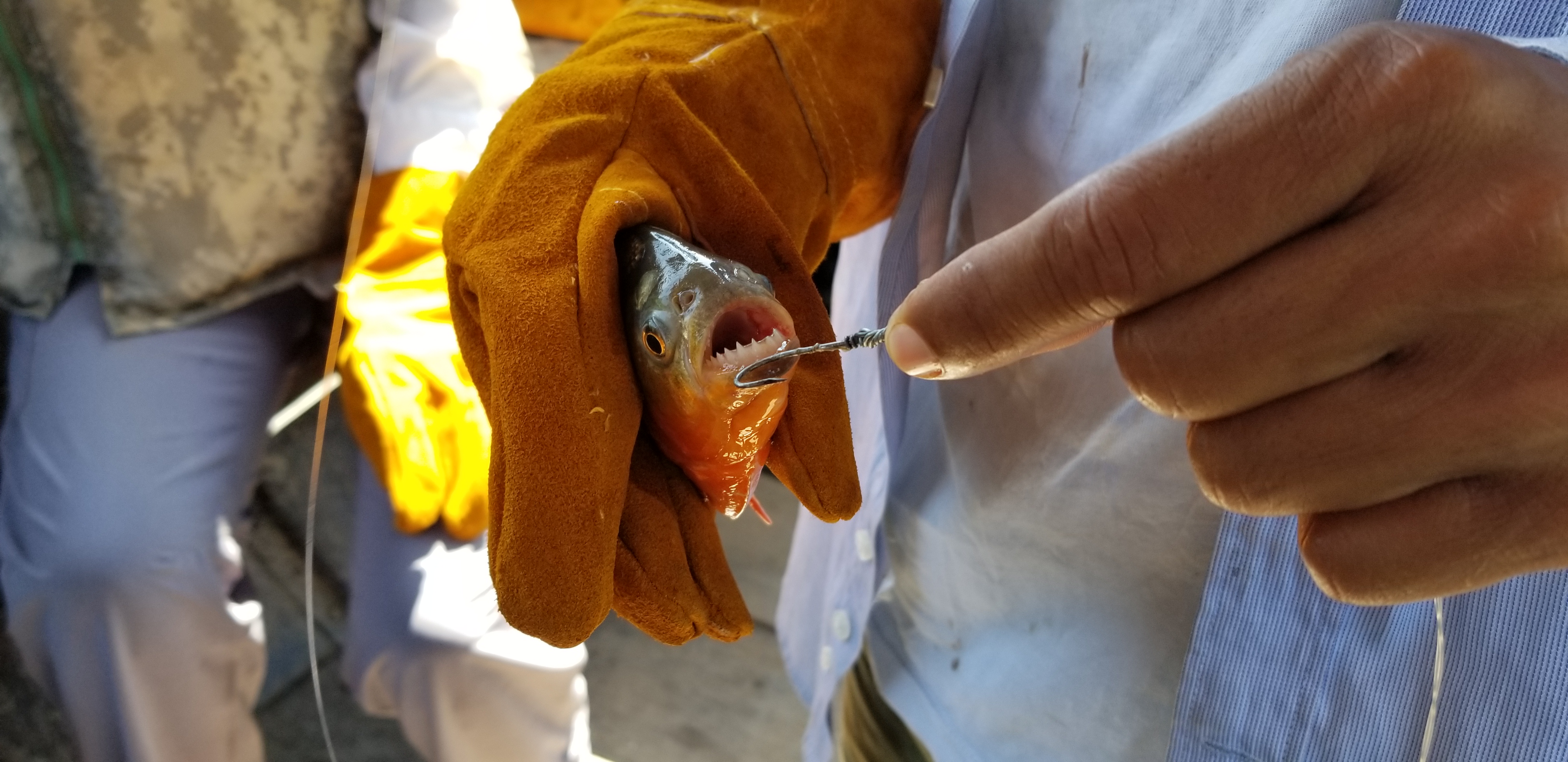 |
Actually, it was more like piranha counting! We had simple hand-made wooden poles with a chicken-baited hook, and would typically catch a piranha within 5 or 10 seconds of the hook hitting the water. However, we also caught and counted a few other species as well. |
 |
We measured and weighed each fish, then tossed it back, except for the handful we kept and brought back to add to the dinner’s main course. (They’re actually quite tasty – sort of like… um… chicken!) |
 |
And here’s the dining room, which also served as the auditorium for the evening lectures and next-day signups. |
 |
And by the way, if you’re looking for a very tasty drink, here it is: chicha morada, with chopped apples sprinkled on top. It’s made from purple corn, and tastes like a sweet juice drink. You can find it at most any Peruvian grocery store. Here’s the Wikipedia article: ChichaMorada |
 |
Another one of our early excursions took the form of a “transect”, where a group of us walked through the rain forest looking for mammals to count. Not surprisingly, we didn’t see much except for several troops of monkeys, since most forest critters are more nocturnal and are better recorded via infrared “camera traps”. (In fact, one of our afternoon activities was to go through some unlabeled camera trap videos to label and document anything of interest.) But we certainly saw some interesting flora, such as whatever this is in the photo. Here’s a video of a few monkeys we saw (well, maybe just one monkey!): TransectMonkeys |
 |
Here’s another shot taken on the transect, showing a huge tree in the background. (Each transect amounted to about 1.5 miles round trip, following a trail that had already been cut through the rain forest.) |
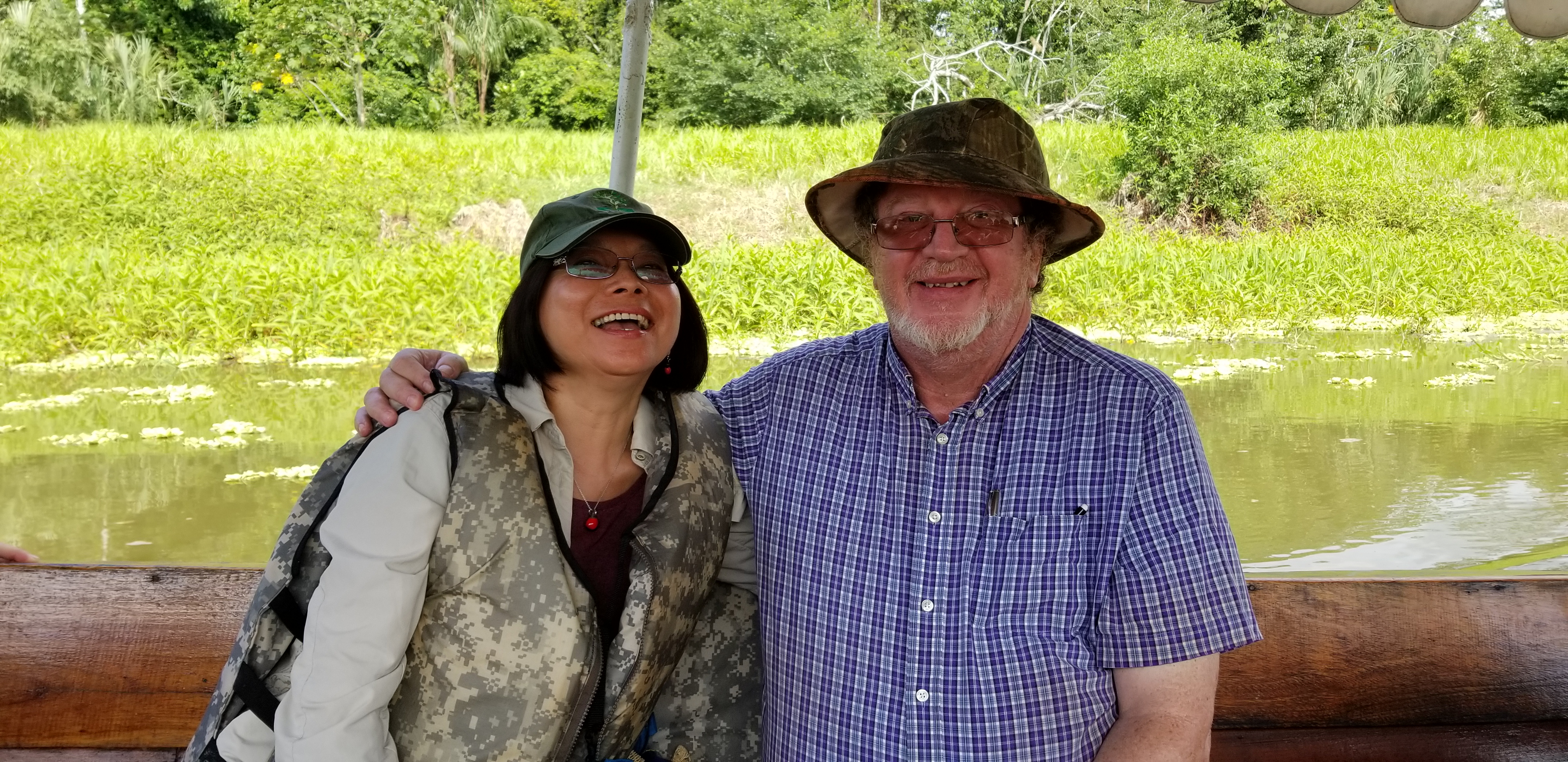 |
And here’s Richard Bodmer, our P.I., and his wife Tula Fang, also a research scientist – shot on an aquatic plant counting excursion up the side river. Here are a couple of links for them: Richard, Tula |
 |
Another excursion we really enjoyed took us out on the main Amazon to count gray and pink dolphins. We saw and counted plenty of each type, and could even distinguish adults, adolescents, and juveniles. Richard also brought an underwater microphone and recorder to capture their dialogs, which he then sent to a lab in France for analysis. Here’s our dolphin video: Dolphins |
 |
Among the other excursion choices were nesting birds (as they flew overhead) and shore birds. Here we were estimating the numbers of various shore bird species, with guidance from one of the research assistants. |
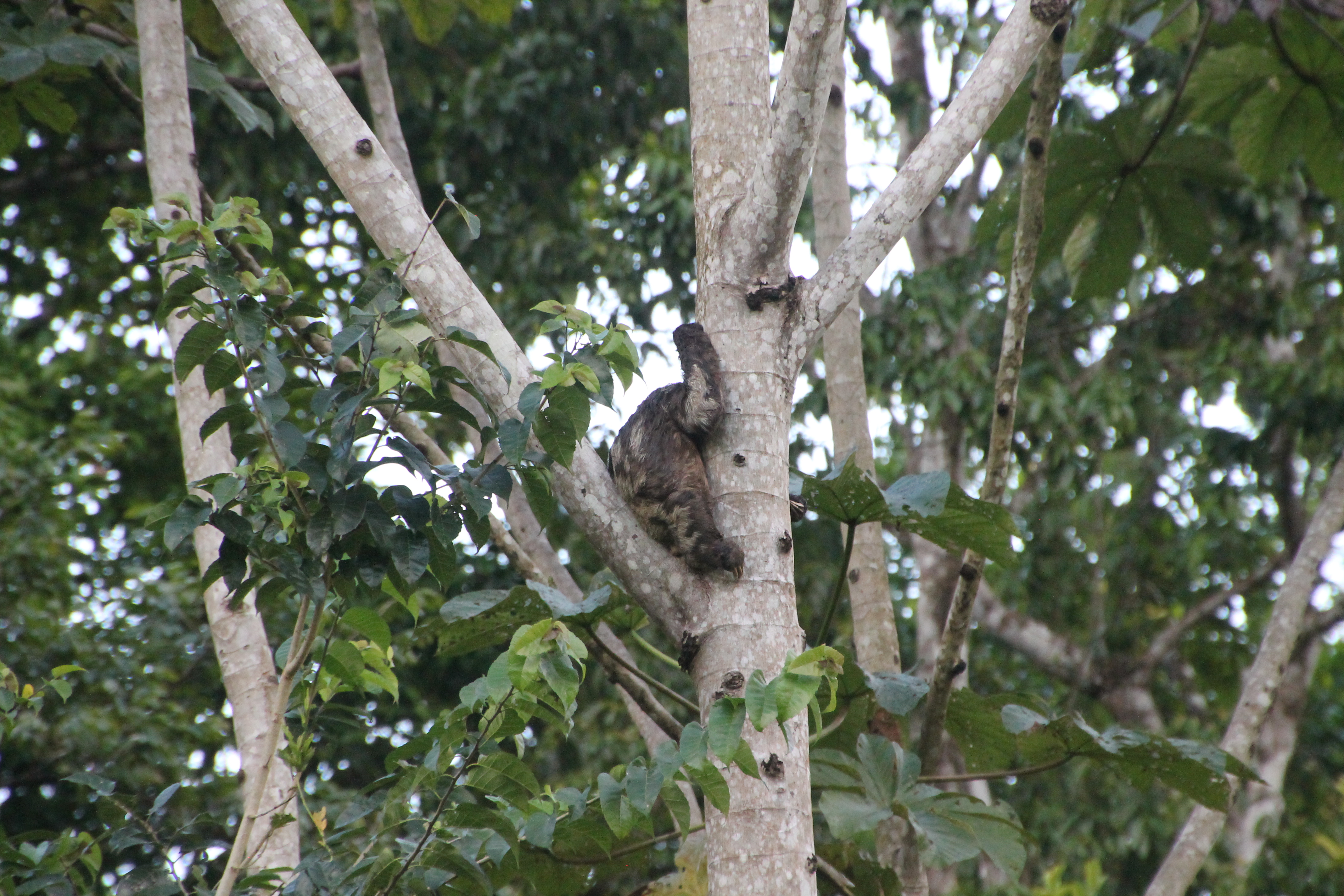 |
And then, on another excursion to count a certain type of floating river plant, there was this one sloth sitting way up in a tree. Here’s a cute article about them: Sloths |
 |
On Saturday, at the end of the first week, we spent the day visiting a village of perhaps fifty families several miles up the side branch river. Here, we’ve just gotten off the canoes and are approaching the village. |
 |
And here we are entering their “town square”, which also serves as the village soccer field. As we were walking by some of their huts (which are all up on 5 or 6 foot stilts so as to be above the river water during the rainy season), a 5 or 6 year old boy popped up several times from behind his home’s elevated railing, shouting “Gringos!” at us each time. We all had a big laugh, and gave his parents thumbs-up! |
 |
And here are several of the village’s common buildings for meetings, worship, and other community affairs. |
 |
The village’s elementary school is a single room which accommodates all grade levels at once. The young woman at the left in the white shirt is one of the Earthwatch research assistants, who had also attended this school as a kid. The school had obviously planned on our visit, since we were greeted and serenaded by 30 or 40 of the school kids. Here’s a video of the kids in their classroom: SchoolKids |
 |
And then we visited their outdoor bazaar, where everyone could buy handicrafts made by the villagers. Here’s a video: VillageBazaar |
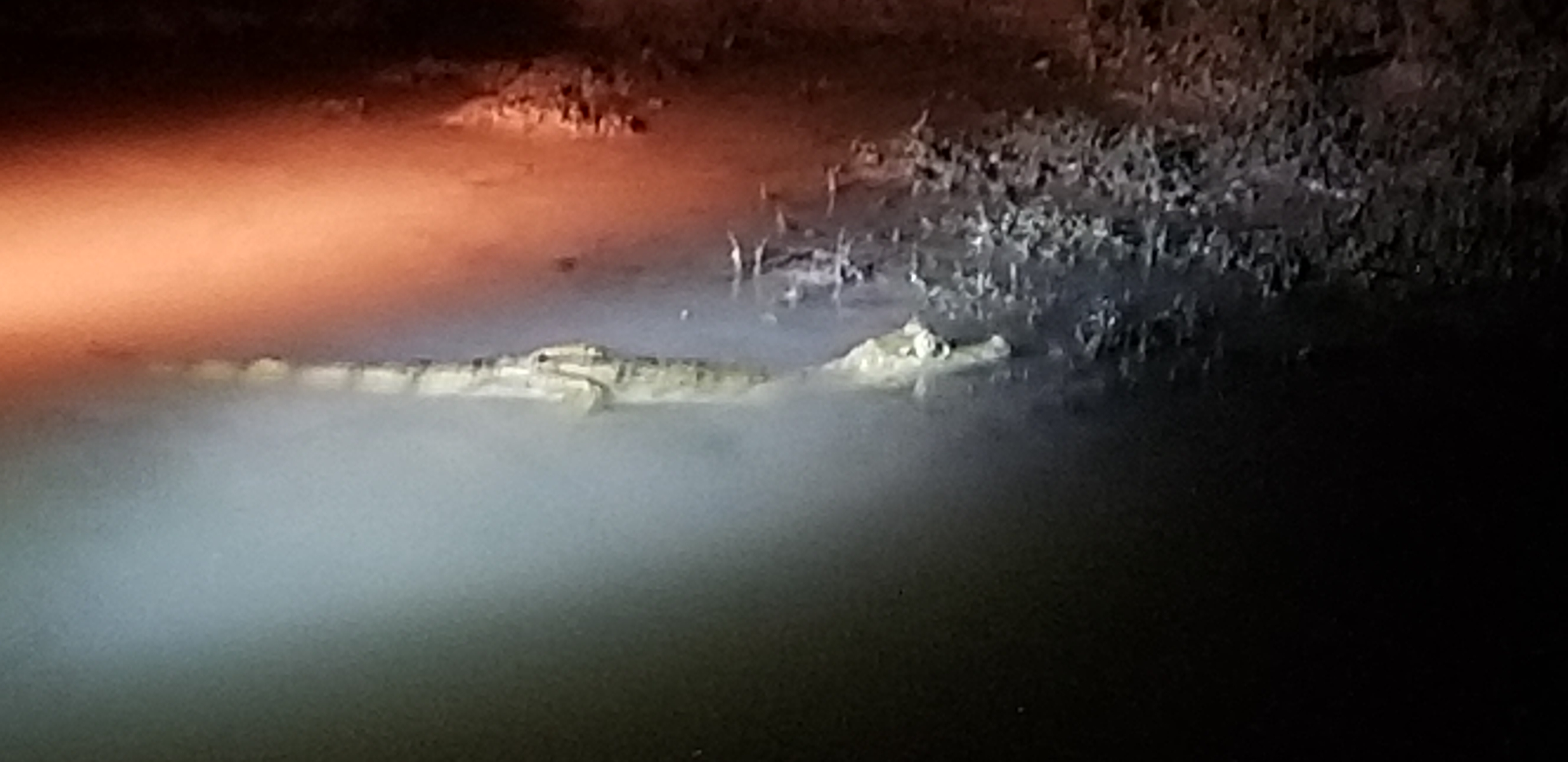 |
Then more critter counting the next several days. Here we are on an evening excursion to count caimans. (On other evening excursions, we counted fishing bats and frogs.) |
 |
We also visited a smaller “village” of just several families, and got up-close views of their plentiful gardens. (The unroasted peanuts fresh out of the ground were outstanding!) Here we’re stuck in some aquatic plants on our way there (but got free after about 20 minutes of maneuvering). |
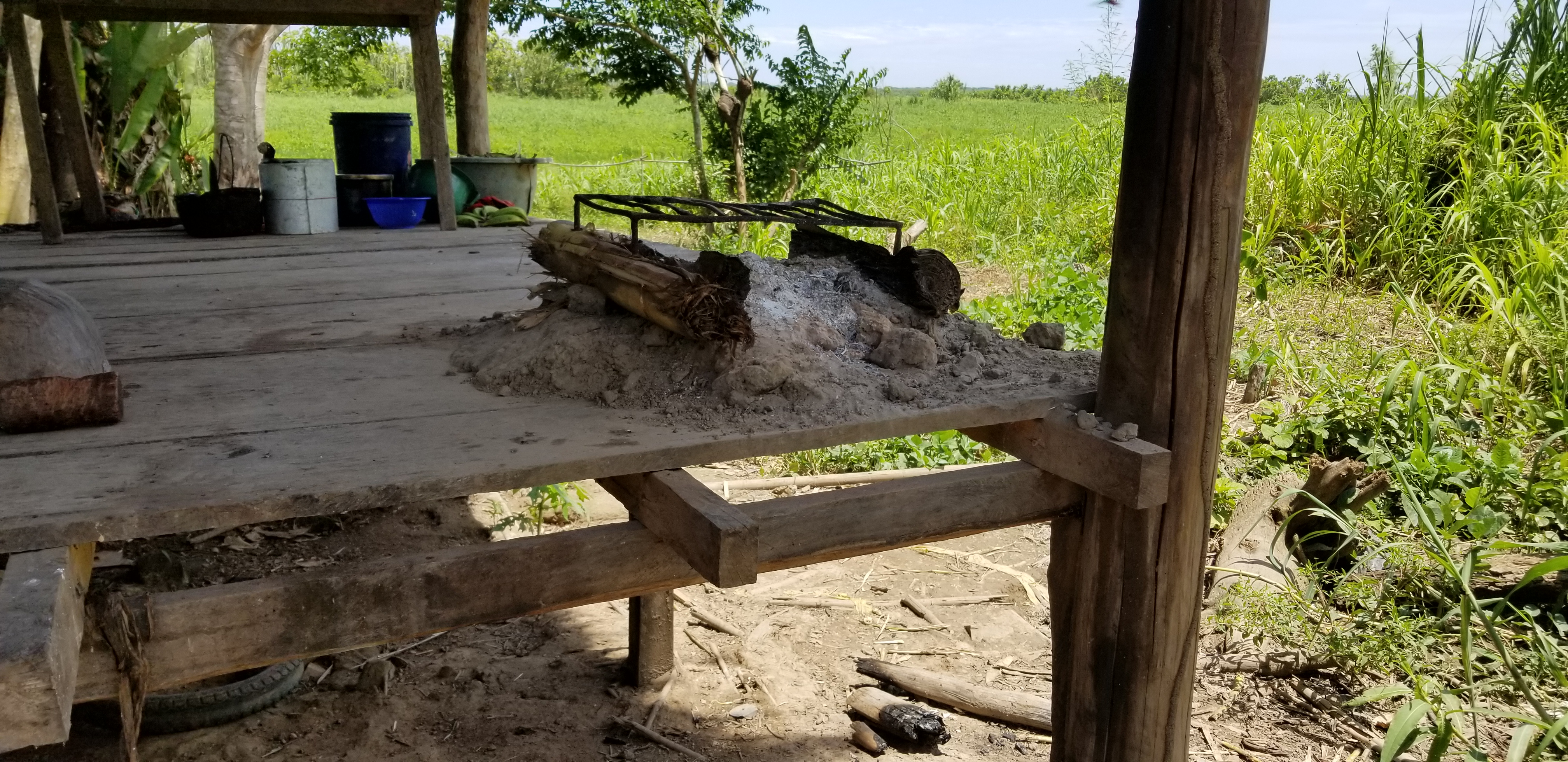 |
Here’s a “kitchen” in the corner of one of their homes |
 |
And here’s how they extract sugar from sugar cane, using a home-made squeezing device. Here’s a video: SqueezingSugarCane |
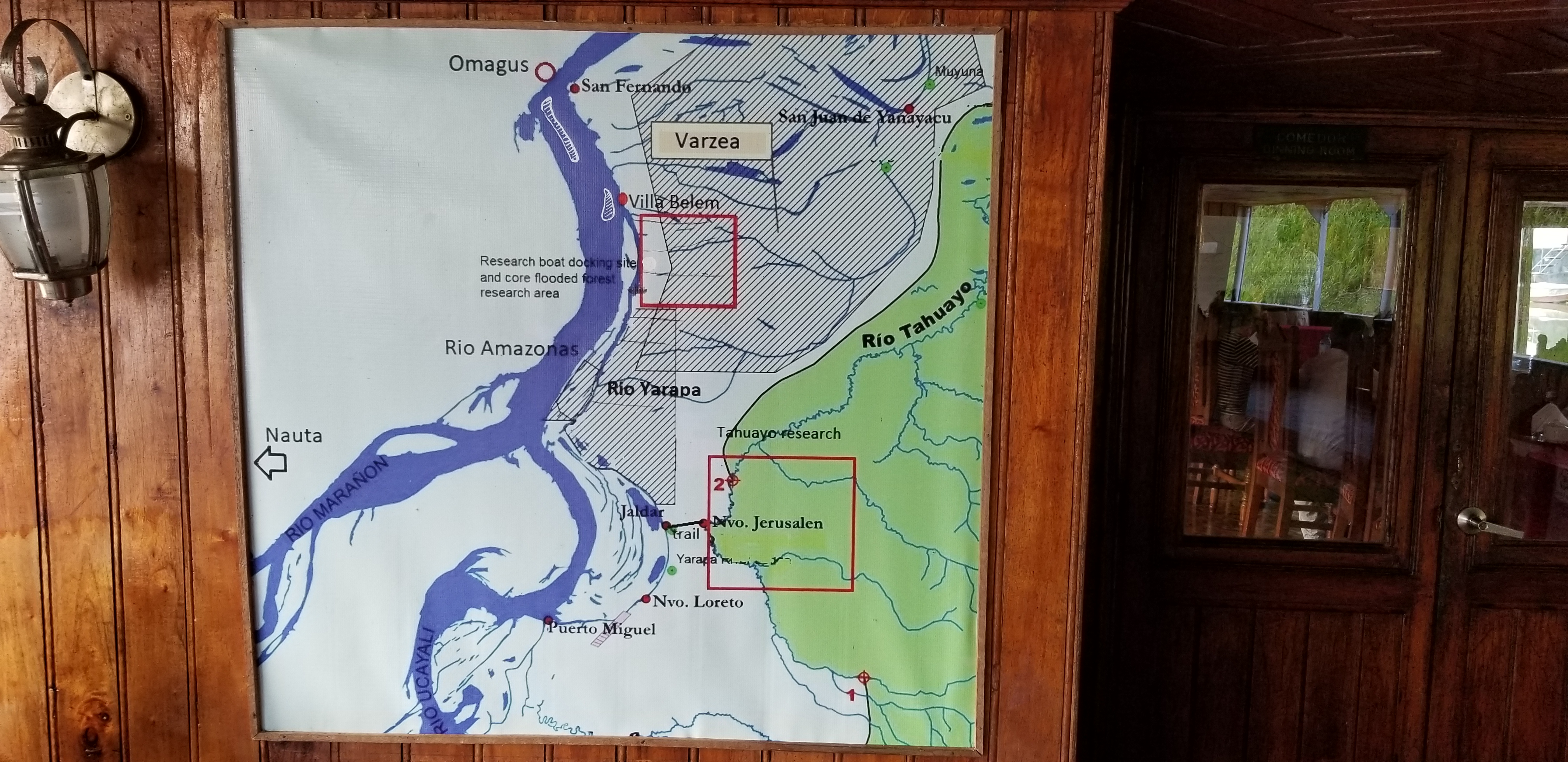 |
Here’s a map showing where we were. And I’ve forgotten to mention one very interesting fact: there were essentially no mosquitos anywhere, so we had to settle for being bitten by biting flies, which were ubiquitous every time we were out in the boats! |

And here are all of us tourists, posing on the last day as we were getting ready to leave – four from the UK, one from Japan, and five of us from the US.